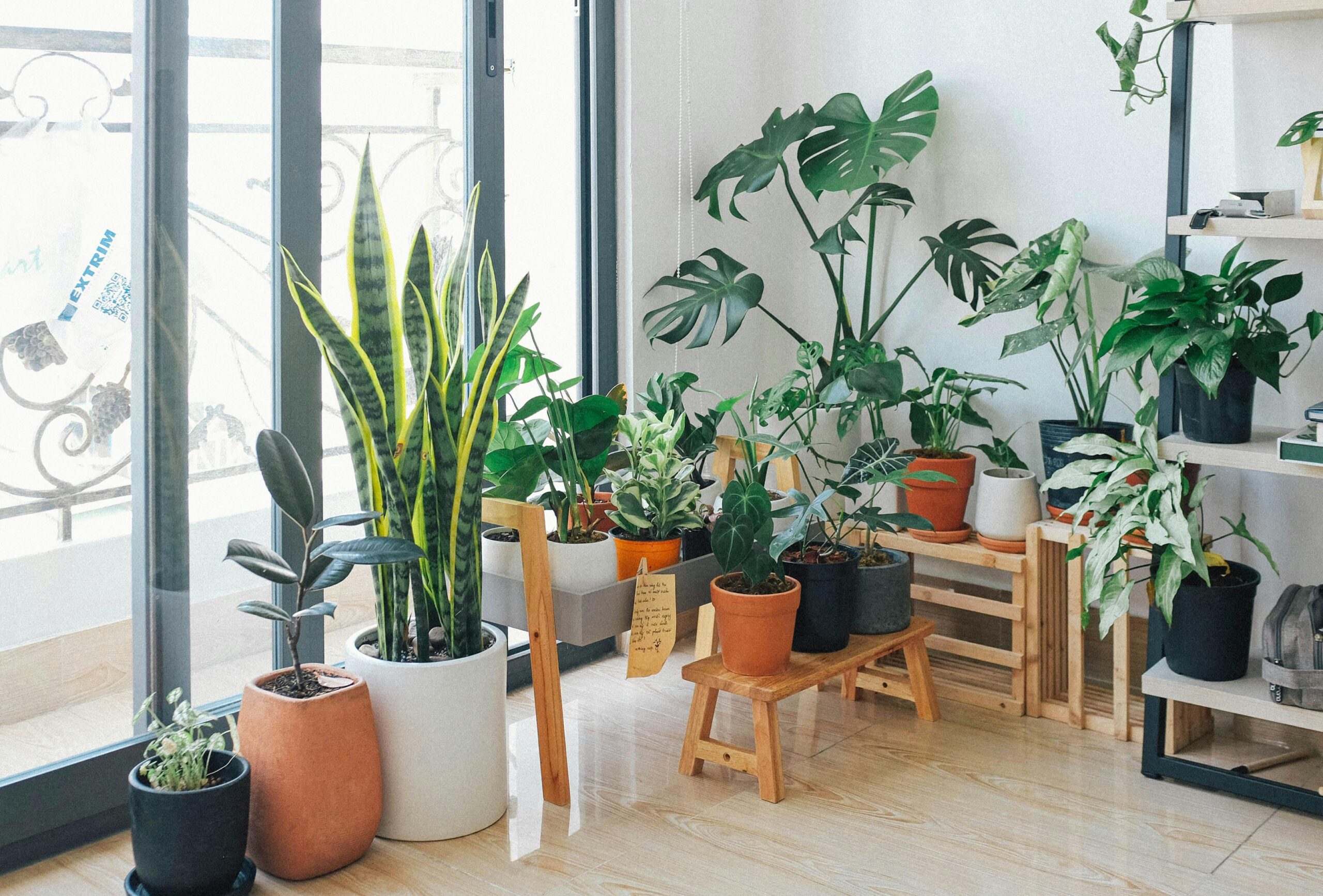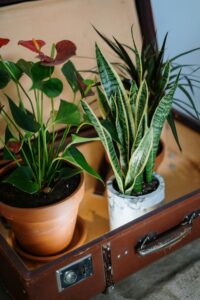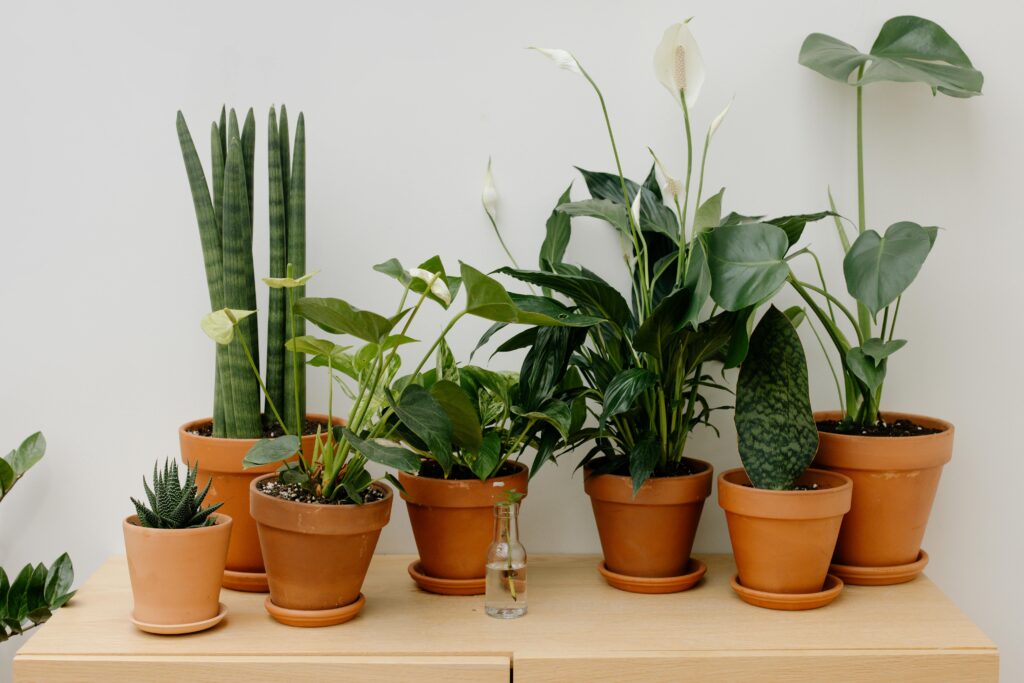Large low light indoor plants exposure serve as the best choice for areas that lack sufficient sunlight. People with varied gardening experience can find these home-decorating plants beautiful because they survive without extreme exposure to sunlight. The best low light tolerant plants will be explored in detail.

Table of Contents
Why Choose Large Low Light Indoor Plants?
- Low Maintenance: Large low light indoor plants need minimal care so they suit busy individuals and those starting to grow plants.
- Air Purification: The Snake Plant and Rubber Plant serve as effective purifiers of indoor air because they remove toxic substances from the environment.
- Aesthetic Appeal: Plants deliver dramatic aesthetic value that brightens any room setting regardless of insufficient sunlight.
- Space Transformation: Large plants function as architects when used as decorative elements because they turn lifeless corners or empty spaces into eye-catching green oasis areas.
8 Tall Low Light Indoor Plants for Your Home
1. Snake Plant (Sansevieria trifasciata)
- Light: Tolerates anything from low light to direct sunlight.
- Size: Grows up to 3-4 feet indoors.
- Care: Extremely low maintenance; allow soil to dry between waterings.
Why You’ll Love It: The Snake Plant known as “Mother-in-Law’s Tongue” proves close to impossible to destroy. The architectural beauty of its narrow upright leaves gives this plant an appropriate position within contemporary home designs. This plant maintains its strong and stylish appearance through any dim lighting conditions.
2. Monstera (Monstera deliciosa)
- Light: Prefers indirect, low to medium light.
- Size: Can reach 6-8 feet indoors.
- Care: Needs support like a moss pole as it matures.
Why You’ll Love It: The Monstera plant displays its tropical essence through its large split-shaped leaves which have made it an iconic specimen. This plant grows best in bright lighting yet its large pretty leaves perform well in even dim illumination conditions.
3. Corn Plant (Dracaena fragrans)
- Light: Tolerates low light beautifully.
- Size: Up to 6 feet tall indoors.
- Care: Water moderately; prefers slightly moist soil.
Why You’ll Love It: A Corn Plant shows itself through woody thick stalks and glossy green leaf fragments. The Corn Plant provides a tropical atmosphere which works beautifully as a room or workplace decoration.
4. Cast Iron Plant (Aspidistra elatior)
- Light: Extremely low light tolerant.
- Size: Typically reaches 2-3 feet.
- Care: Truly hardy perfect for neglectful owners.
Why You’ll Love It: It’s name accurately describes the Cast Iron Plant because of its strong resistance abilities. This plant maintains its firm green color even when located in total darkness and it cannot be killed with regular care.
5. Parlor Palm (Chamaedorea elegans)
- Light: Prefers low to moderate indirect light.
- Size: Can grow up to 6 feet tall.
- Care: Keep soil consistently moist but not soggy.
Why You’ll Love It: This Victorian-era addition creates a refined appearance with green plants in your environment. The plant tolerates some amount of neglect while performing well under both bright and dim lighting conditions.

6. Philodendron (Philodendron spp.)
- Light: Thrives in low to bright indirect light.
- Size: Varies by species; many can climb or trail.
- Care: Water when the top inch of soil dries out.
Why You’ll Love It: Philodendron plants present fantastic flexibility through their available trailing and upright plant forms. The plant’s heart-shaped foliage creates a relaxing and rich appearance for any room setting.
7. Chinese Evergreen (Aglaonema spp.)
- Light: Performs best in low to moderate light.
- Size: Up to 3 feet tall.
- Care: Prefers humid environments but adapts well to average indoor humidity.
Why You’ll Love It: Vibrant variegated leaves make this plant a colorful choice even for darker rooms. Chinese Evergreens are robust and forgiving.
8. Jade Plant (Crassula ovata)
- Light: Thrives in bright, indirect light but can tolerate low light conditions.
- Size: Typically grows up to 2–3 feet tall indoors.
- Care: Prefers well-draining soil and occasional watering when the soil dries out. Very drought-tolerant.
Why You’ll Love It: The Jade Plant creates elegance in home interiors because it features glossy leaves and a tree-form shape. Low-maintenance plant enthusiasts will find the Jade Plant to be the ideal choice because it is highly resistant to neglect.
Tall Indoor Plants Care Tips
- Water Mindfully: Plants that grow under low-light conditions require smaller water amounts when compared to plants that require bright sunlight. A lack of proper watering techniques serves as the main cause for indoor plant failure particularly when plants grow inside low-light areas.
- Use Well-Draining Soil: Select a lightweight soil composition which drains water well. A proper soil selection protects roots from sitting in moisture and produces successful plant development through time.
- Rotate Your Plants: Low light conditions suit your plants but they need complete light access too. Periodically switch your plant position by 180 degrees every fourteen days to maintain balanced growth throughout all plant faces including lush foliage.
- Clean the Leaves Regularly: The accumulation of dust on plant leaves creates an obstacle that impedes light penetration through small light sources. A clean set of healthy leaves results from using a damp cloth to gently clean their surfaces.
- Maintain Stable Conditions: Plants need to stay in temperature environments within the 60–75°F range while also avoiding exposure to heating vents or cold drafts. Low light plants grow optimally and display their best appearance under stable conditions.
Final Thoughts
When selecting low light indoor plants you get more than visual space filling because they give your home fresh life and relaxing rest areas while integrating nature into your domestic surroundings. Every home possesses the ideal plant among the numerous large low light indoor plants options which include Rubber Plant, Monstera and Cast Iron Plant.
Regardless of your response the wide range of available big indoor plants adapted for low-light conditions offers boundless opportunities. Learning about unique plant characters will allow you to pair them with your preferred design style when decorating your space and thus develop a living sanctuary.


Indoor plants that thrive in low light are such a great addition to any space! I love how they bring life and beauty without needing much sunlight. The idea of pairing plants with specific design styles is brilliant—it really helps create a cozy, personalized sanctuary. I’m curious, which of the Ficus varieties would you recommend for a minimalist home? Also, how often do these plants need watering in low-light conditions? I’ve heard mixed opinions, and I’d love to hear your take. Do you think a banana plant could work in a small apartment, or does it need more space? Your guide seems super helpful, and I’m excited to try some of these ideas!
I absolutely love the idea of using large low-light indoor plants to enhance spaces with limited sunlight. It’s amazing how they can thrive without much light and still add so much beauty to a room. Pairing plants with specific design styles is such a creative approach—it really helps make a space feel unique and personal. I’m particularly curious about the Ficus varieties; which one would you suggest for a modern, minimalist home? Also, how often should these plants be watered in low-light conditions? I’ve heard different advice, and I’d love to know your recommendation. Do you think a banana plant could work in a small apartment, or does it require more space to grow properly? Your guide is so inspiring, and I can’t wait to try some of these ideas in my own home!
Absolutely love the idea of using large low-light indoor plants to transform spaces with limited sunlight! It’s fascinating how they can thrive without much light and still bring so much life and beauty to a room. Pairing plants with specific design styles is such a creative and thoughtful approach—it really helps make a space feel unique and personal. I’m particularly curious about the Ficus varieties; which one would you suggest for a modern, minimalist home? Also, how often should these plants be watered in low-light conditions? I’ve heard different advice, and I’d love to know your recommendation. Do you think a banana plant could work in a small apartment, or does it need more space to grow properly? Your guide seems super helpful, and I’m excited to try some of these ideas in my own home!
I think large low-light indoor plants are a fantastic way to bring nature into spaces that don’t get much sunlight. It’s impressive how they can thrive in such conditions and still look stunning. Pairing them with specific design styles is such a smart idea—it really helps create a cohesive and inviting atmosphere. I’m especially interested in the Ficus varieties; which one would you recommend for a minimalist, modern home? Also, how often should these plants be watered in low-light environments? I’ve heard conflicting advice and would love your insight. Do you think a banana plant could work in a small apartment, or does it require more space to grow properly? Your guide seems really helpful, and I’m excited to try some of these ideas in my own home!
I love how large low-light indoor plants can transform any space, even without much sunlight. They’re such a versatile and beautiful addition to any home, and it’s great that they’re easy to care for. Pairing plants with specific design styles is such a smart idea—it really helps create a cohesive and personalized look. I’m curious, which Ficus variety would you recommend for a minimalist aesthetic? Also, how often should these plants be watered in low-light conditions? I’ve heard conflicting advice, and I’d love to hear your thoughts. Do you think a banana plant could thrive in a smaller apartment, or does it need more room to grow? Your guide seems so helpful, and I’m excited to try some of these ideas in my own space!